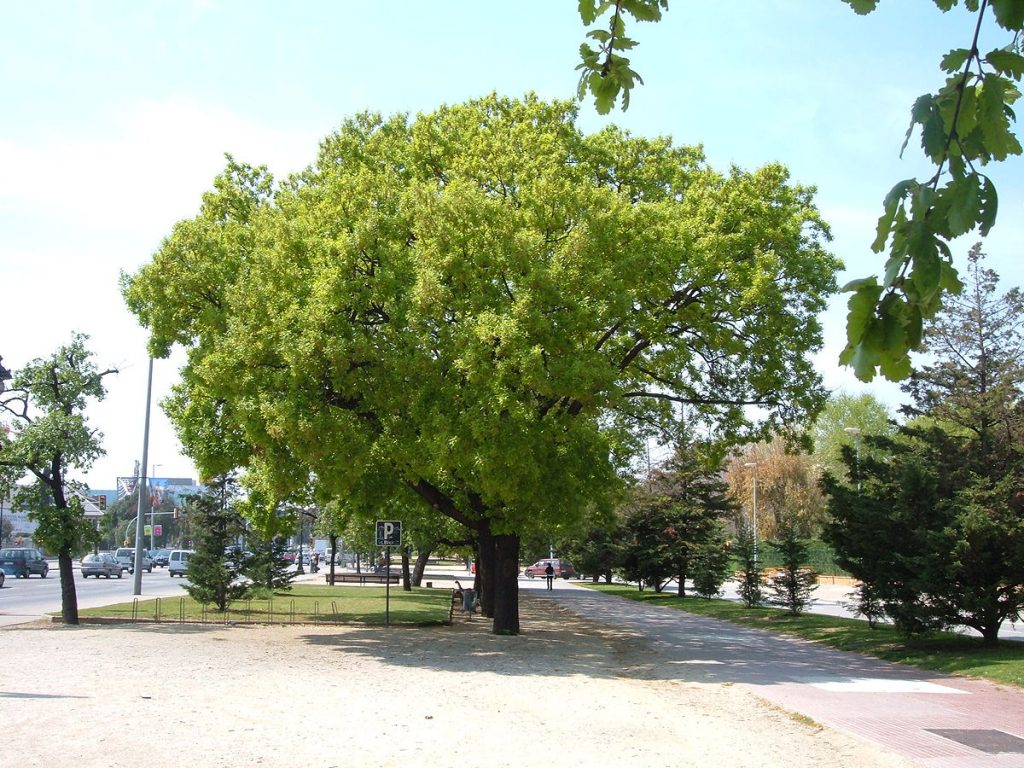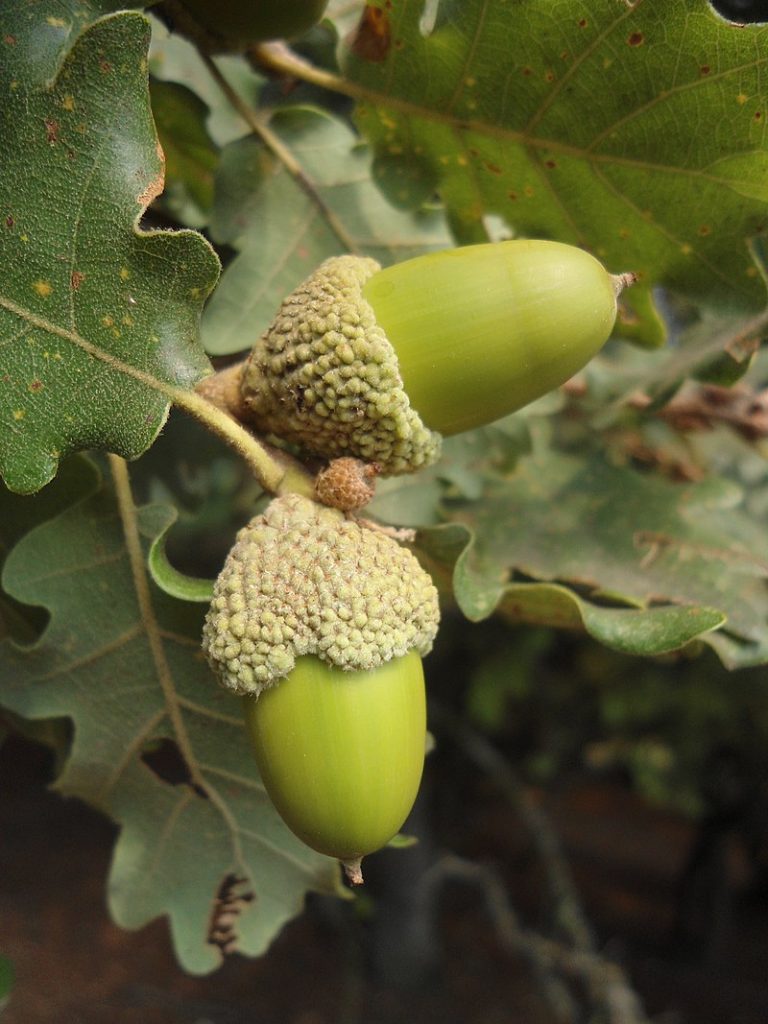
Native to dry, lime-rich soils of southern Europe, parts of central Europe, and southwest Asia, this deciduous tree thrives in submediterranean climates where summers are dry and hot and the winters are cool with little rain. It is a member of the beech family, Fagaceae, that also includes chestnut. Downy oak, like other oaks, contains tannins in its bark, leaves, acorns and galls. Tannins are astringent and used in tanning leather and fixing dyes. The remains of fulleries and tanning establishments in ancient Pompeii suggest that both uses of tannins were known there although the specific sources of the tannins has not been identified. Scholars believe that Q. pubescens grew in ancient Pompeii along with Q. ilex, Q, cerris, and Q. robur. A wall painting in the House of Fabius Rufus includes the leaves, stems and acorns of an oak that could be Q. pubescens. The acorns of oaks were often used as fodder for pigs and in times of food scarcity were ground up to make flour. Photo Credit Arturo-Reina-Sanchez-Wikipedia-Commons

Description: The tree grows up to 66′ tall and has a very broad and irregular crown at maturity. The trunks may be over 6′ across, and have rough, flaky, light gray bark that may develop deep furrows with age. The branches are usually crooked. The light purple or whitish twigs are covered with matted woolly hairs and the blunt buds are light brown. As the leaves unfold they are whitish to pink but become leathery, dark green above, light green below, and covered with soft hairs. Clustered at the end of the twigs, the leaves are egg-shaped to elliptic , up to 5” long, and are usually divided into 3-7 pairs of lobes with sublobes. Both the base and tip of the leaves are rounded rather than sharp. The leaves remain green on the tree to early winter and then turn brown or russet before falling. Inconspicuous, yellowish-green male and female flowers appear in spring on the same tree. The male flowers are in long pendent hairy catkins while the female flowers are in clusters and give rise to groups of 2-5 light gray to almost white acorns that are pointed, ovoid, up to 3/4″ long, and are covered with woolly hairs. Photo Credit Dimitar-Naydenov-Wikimedia-Commons.
Size: 40-66′ H x 20-40′ W
Light: Full sun but tolerates some shade
Soil: Rich, moist, well-drained, alkaline
Hardiness: USDA Hardiness Zones 5-8